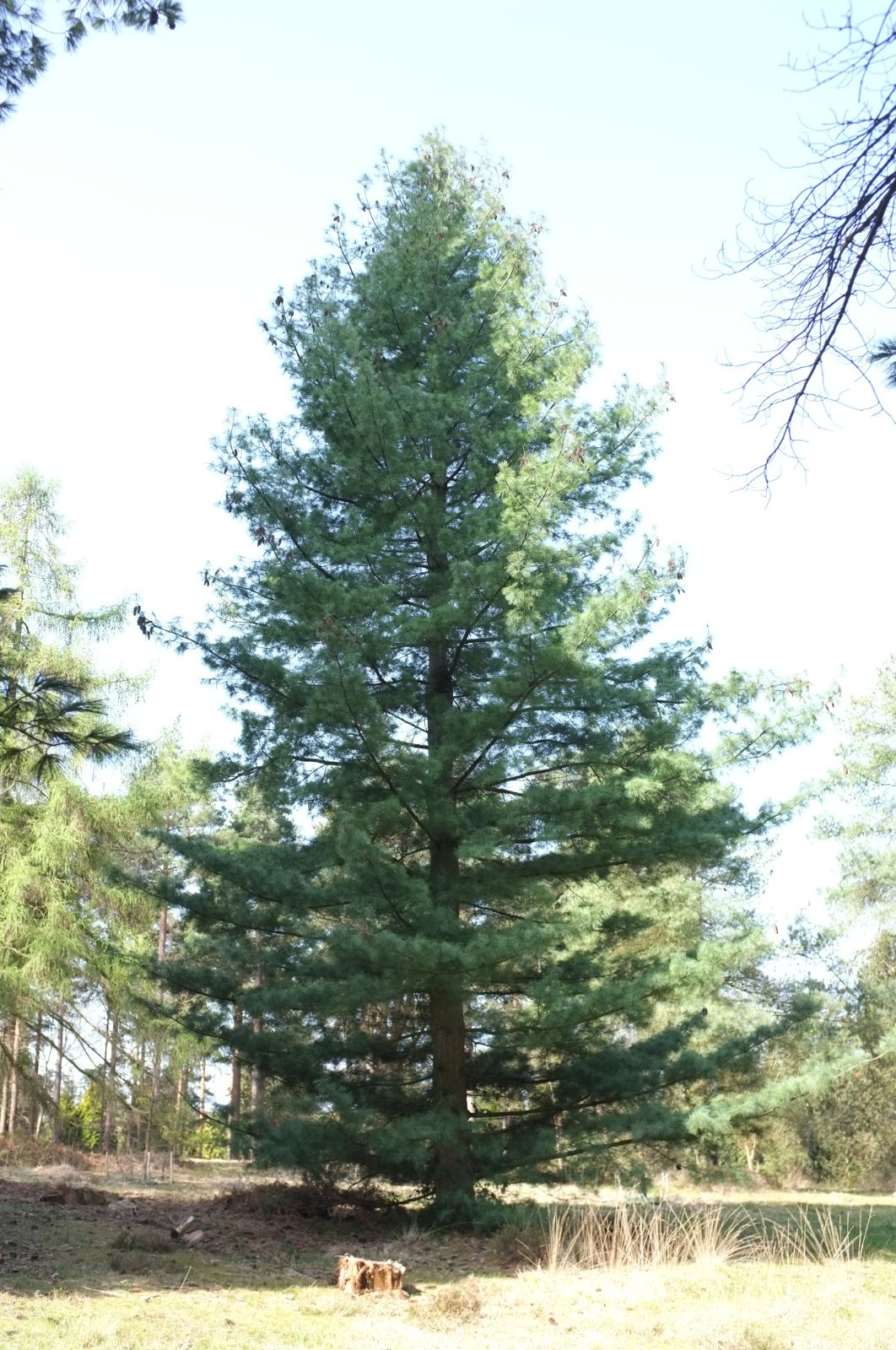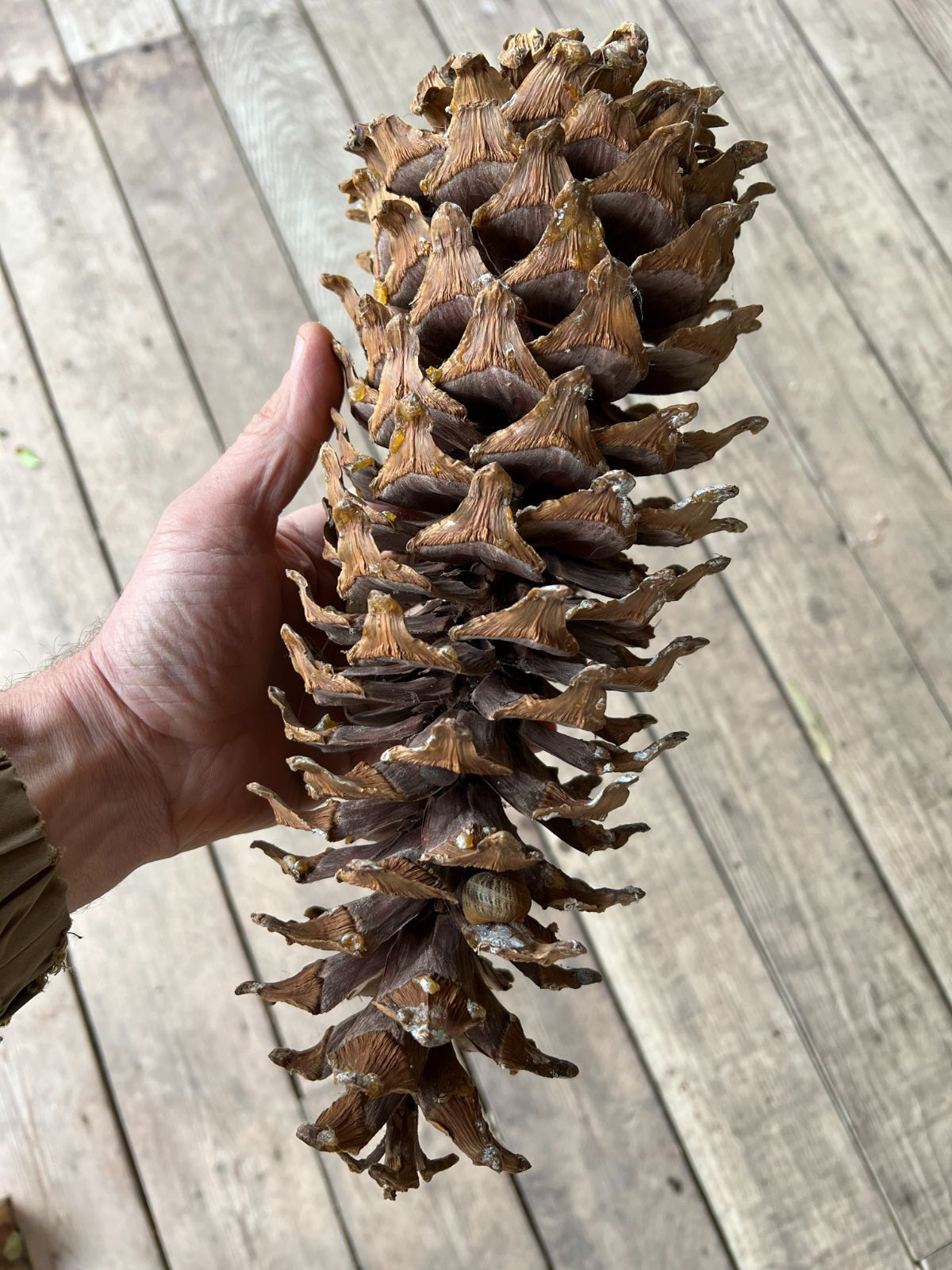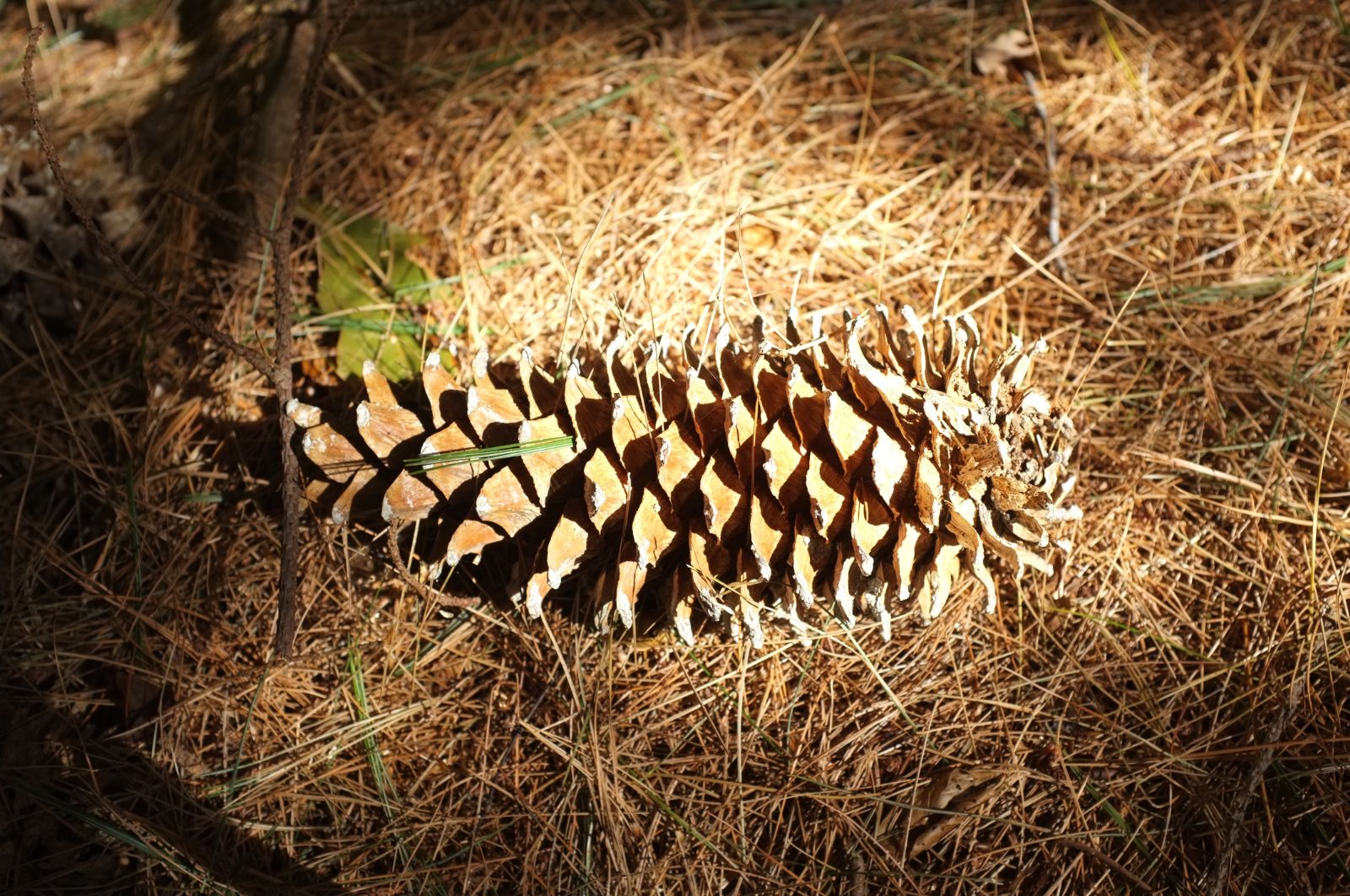Pinus strobiformis
Credits
Article from New Trees by John Grimshaw & Ross Bayton
Recommended citation
'Pinus strobiformis' from the website Trees and Shrubs Online (treesandshrubsonline.
Genus
- Pinus
- Subgen. Strobus, Sect. Quinquefolius
Common Names
- Southwestern White Pine
Synonyms
- P. ayacahuite var. brachyptera G.R. Shaw
- P. ayacahuite var. novogaliciana Carvajal
Infraspecifics
Other taxa in genus
- Pinus albicaulis
- Pinus arizonica
- Pinus armandii
- Pinus attenuata
- Pinus ayacahuite
- Pinus balfouriana
- Pinus banksiana
- Pinus bhutanica
- Pinus brutia
- Pinus bungeana
- Pinus canariensis
- Pinus cembra
- Pinus cembroides
- Pinus chiapensis
- Pinus contorta
- Pinus coulteri
- Pinus culminicola
- Pinus densata
- Pinus densiflora
- Pinus devoniana
- Pinus durangensis
- Pinus echinata
- Pinus edulis
- Pinus elliottii
- Pinus engelmannii
- Pinus eremitana
- Pinus flexilis
- Pinus gerardiana
- Pinus greggii
- Pinus × hakkodensis
- Pinus halepensis
- Pinus hartwegii
- Pinus heldreichii
- Pinus henryi
- Pinus × holfordiana
- Pinus hwangshanensis
- Pinus jeffreyi
- Pinus johannis
- Pinus koraiensis
- Pinus lambertiana
- Pinus leiophylla
- Pinus longaeva
- Pinus massoniana
- Pinus maximartinezii
- Pinus monophylla
- Pinus montezumae
- Pinus monticola
- Pinus morrisonicola
- Pinus mugo
- Pinus muricata
- Pinus nelsonii
- Pinus nigra
- Pinus oocarpa
- Pinus orizabensis
- Pinus palustris
- Pinus parviflora
- Pinus patula
- Pinus peuce
- Pinus pinaster
- Pinus pinceana
- Pinus pinea
- Pinus ponderosa
- Pinus pseudostrobus
- Pinus pumila
- Pinus pungens
- Pinus quadrifolia
- Pinus radiata
- Pinus remota
- Pinus resinosa
- Pinus rigida
- Pinus roxburghii
- Pinus sabiniana
- Pinus serotina
- Pinus sibirica
- Pinus strobus
- Pinus sylvestris
- Pinus tabuliformis
- Pinus taeda
- Pinus taiwanensis
- Pinus teocote
- Pinus thunbergii
- Pinus torreyana
- Pinus virginiana
- Pinus wallichiana
- Pinus wangii
- Pinus yunnanensis
Tree to 30 m, trunk straight and erect, 0.8–1 m dbh. Bark thin, smooth, silvery grey; in older trees thick, rough, scaly, dark brown to grey, breaking into small, irregular plates. Crown initially conical or pyramidal, becoming rounded or irregular in mature trees. Branchlets reddish brown, smooth, glabrous; vegetative buds not or slightly resinous. Leaves in fascicles of five, in dense tufts near the ends of ultimate branches, persisting for three to five years, straight or slightly curved, sometimes slightly twisted, dark green or glaucous, triangular in cross-section, (5–)7–11(–12) × 0.06–0.11 cm, margins serrulate, apex acute. Fascicle sheaths 2–2.5 cm long, orange-brown, rapidly disintegrating. Cataphylls 0.5–1 cm long, brown. Male strobili yellow to orange-brown, ovoid-oblong to cylindrical, 0.6–1 cm long. Female cones subterminal and axillary, solitary or rarely in pairs or in whorls of three to four; peduncles stout, 1.5–2.5 cm long, erect then pendulous, falling with the cone. Cones 12–30(–60) × 7–11 cm, greenish purple to light brown, mature in about 18 months; mature cones variable, mainly cylindrical, often slightly curved. Scales 70–120, opening obliquely; scales thick, woody; apophysis usually rather resinous, light yellowish brown; umbo terminal, greyish brown, resinous. Seeds reddish brown to brown, 1.2–1.8 × 0.8–1.1 cm; wings vestigial, forming a fringe around the seed. Thieret 1993, Farjon & Styles 1997, Farjon et al. 1997, Farjon 2005a. Distribution MEXICO: Chihuahua, Coahuila, Durango, Jalisco, western Nuevo León, San Luis Potosí, Sinaloa, Sonora, Zacatecas; USA: Arizona, New Mexico, Texas (Trans-Pecos). Habitat Typically occurs on north-facing slopes and along mountain streams between 1900 and 3500 m asl. USDA Hardiness Zone 5. Conservation status Lower Risk. Illustration Farjon & Styles 1997, Farjon 2005a; NT580. Cross-references K237 (B213, S373, K210 as P. ayacahuite var. brachyptera).
Pinus strobiformis is little known in cultivation but in the wild forms a substantial tree, with a relatively narrow crown in its youth, although this becomes more rounded with age, with far-reaching branches. It is related to P. ayacahuite and resembles it in many characters, but its leaves are shorter and the average sizes of its handsome cones are smaller. The seeds of P. strobiformis are functionally wingless (Perry 1991). Northern populations (United States, northernmost Mexico) are intermediate between P. strobiformis as described by Engelmann, from southern Chihuahua, and P. flexilis, with smaller cones (12–22 cm) and needles with only a few apical serrations, and have been distinguished as P. flexilis var. reflexa Engelm. or P. reflexa (Engelm.) Engelm. (Farjon & Styles 1997, Farjon 2005a). These northern trees are commonly cultivated in the United States and seem to have a wide tolerance, growing even in the Chicago area (for example, at the Morton Arboretum). In Europe P. strobiformis is much less familiar, although there are a few dwarf cultivars in circulation, and ‘Vanderwolf’s Pyramid’ is widely available (usually sold as P. flexilis). TROBI records a few individuals scattered through the United Kingdom, the recognised champion being an 11 m specimen at the Manor, Walton-in-Gordano, Somerset, measured by Owen Johnson in 2006. Two trees of 11 m and 10.8 m grow in the Hillier Gardens, where they were received in 1985 as P. ayacahuite (Priest 107), and it is possible that other specimens from this collection exist elsewhere (A. Coombes, pers. comm. 2008). It is also present in some collections in continental Europe, but could be grown much more widely. It is, however, very susceptible to white pine blister rust; there has been extensive mortality in New Mexico recently, since the disease invaded the state in 1990 (Conklin 2004), and a mature specimen at Hørsholm Arboretum in Denmark also died of it in 1986 (M. Frankis, pers. comm. 2007).
Pinus veitchii Roezl from central Mexico has traditionally been included in P. ayacahuite as a variety, P. ayacahuite var. veitchii (Roezl) Shaw (see Bean and Krüssmann: B213, K210) – though one recent author (Businský 2004) treats it as a distinct species. It is much closer to P. strobiformis, however, matching it in cone scale thickness and seed size, and differing from it only in seed wing length and minor detail of curvature of cone apophysis.
[Editorial Note: The combination Pinus strobiformis subsp. veitchii (Roezl) Frankis was published in 2009, the same year New Trees went to press.]
subsp. veitchii (Roezl) Frankis
Synonyms
Pinus bonapartea Roezl ex Gard. Chron.
Pinus loudoniana Gord
Pinus veitchii Roezl
Editorial Note
The text below is from (Bean 1976) who discussed this taxon as Pinus ayacahuite var. veitchii. We are reorganising articles within Pinus to enable a partial revision of this important genus to commence in late 2023. See the Editorial Note at the beginning of the genus article for further details.
Body of seed relatively larger, about {1/2} in. long, wing shorter and relatively broader, about {1/2} in. long. Cones sometimes as long as 15 in., with scales 1{1/8} to 1{1/4} in. wide. According to Martinez there is the further difference that the scales are thicker and stronger than in the typical state of the species. This variety is apparently confined to central Mexico, where intermediate forms also occur (Martinez).P. ayacahuite and the var. veitchii are both likely to vary in hardiness, according to provenance. The famous tree at Westonbirt is now decrepit and no longer bears cones, but at one time it coned freely and many seedlings were raised from it (some of which proved to be hybrid; see P. × holfordiana). This tree certainly belongs to the var. veitchii; Shaw, who saw cones from it in the Herbarium of the Arnold Arboretum, actually cites it in his description of var. veitchii. The statement by Elwes and Henry that var. veitchii is tender probably refers to the original introduction by Roezl (as P. veitchii).Among the largest or oldest specimens of P. ayacahuite (some may be var. veitchii) are: Kew, pl. 1873, 54 × 3{1/2} ft (1974) and another, possibly a seedling of the Westonbirt tree, pl. 1904, 49 × 4{1/2} ft (1966); R.H.S. Pinetum, Wisley, Surrey, 62 × 7{1/4} ft (1969); Hergest Croft, Heref., pl. 1916, 60 × 6 ft (1968); Bicton, Devon, 88 × 7{1/2} ft and 78 × 8{3/4} ft (1968); Bodnant, Denb., pl. 1902, 64 × 10{3/4} ft and 71 × 10{1/2} ft (1974); Fota, Co. Cork, Eire, pl. 1902, 60 × 7{3/4} ft (1966).The Westonbirt specimen of var. veitchii, mentioned above, has lost its top; it measured 62 × 6{3/4} ft in 1909 and is now 8{1/2} ft in girth (1971).



